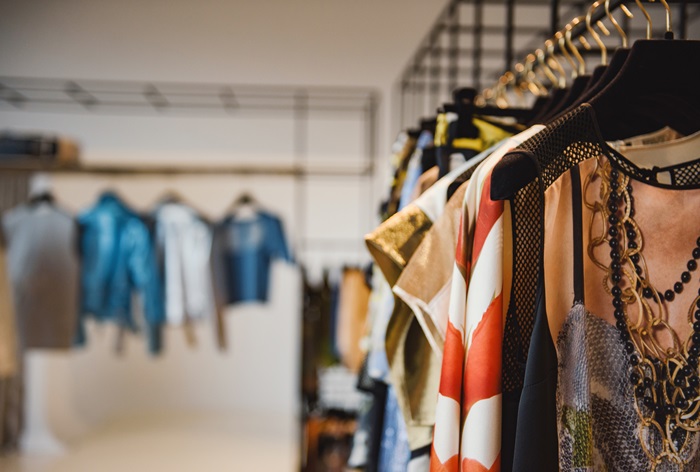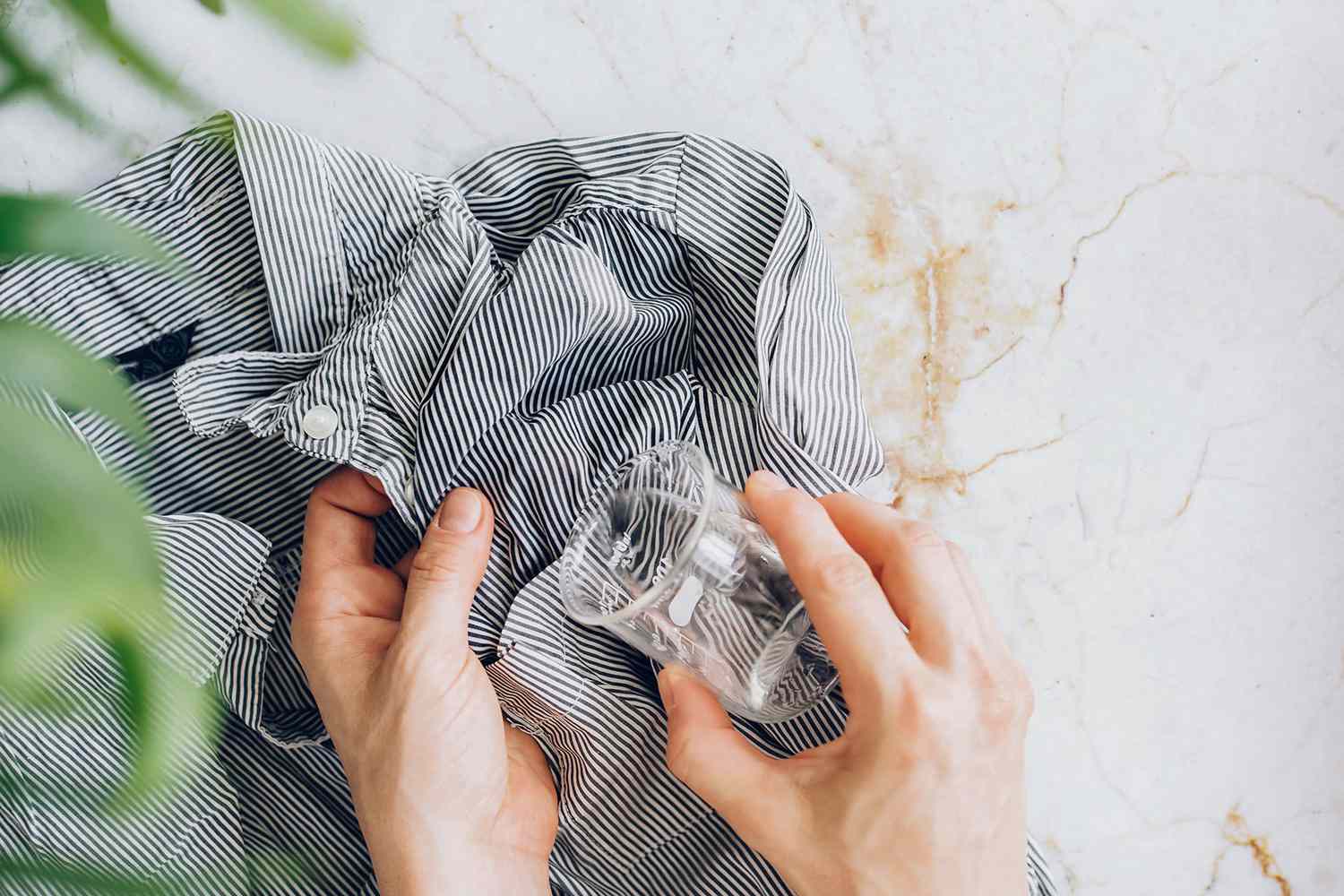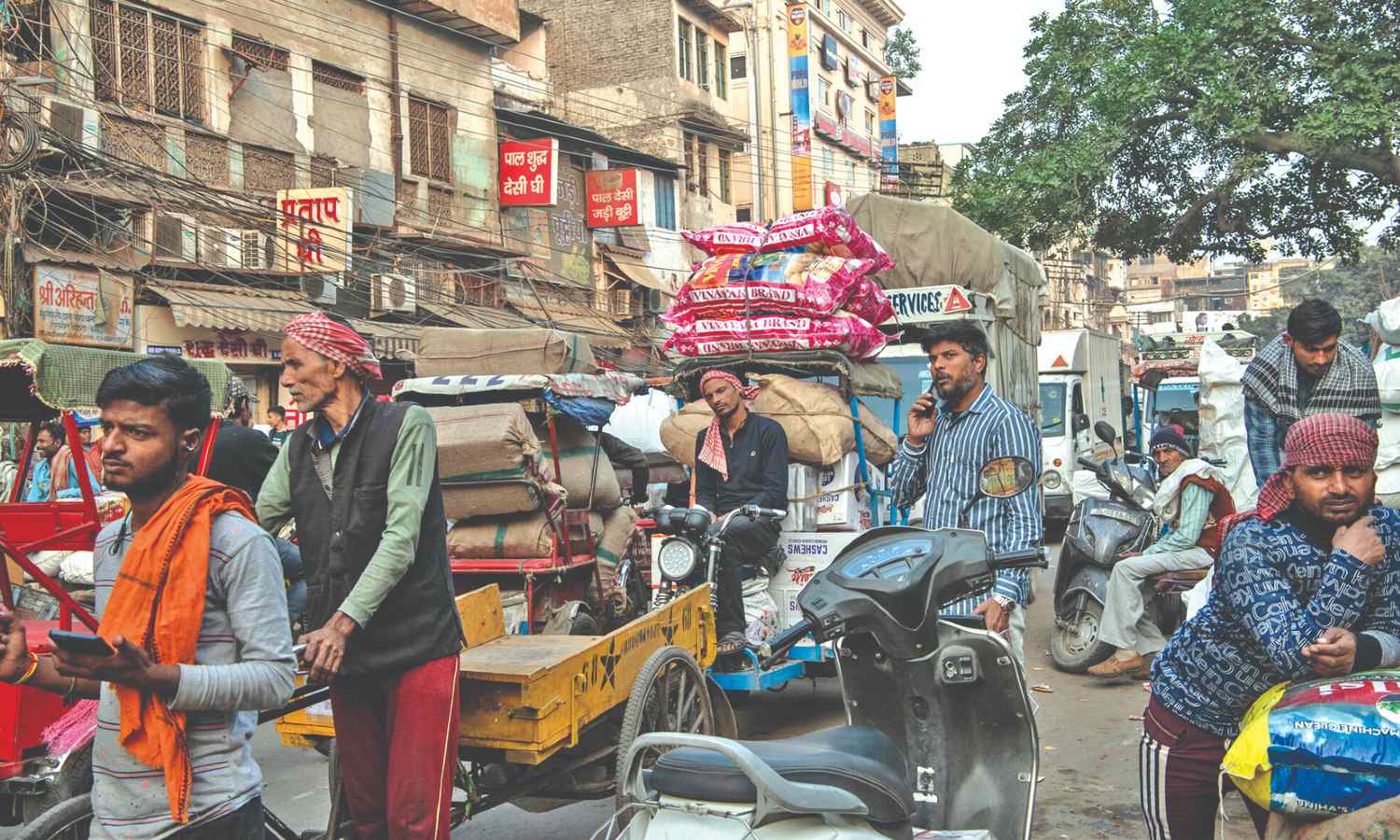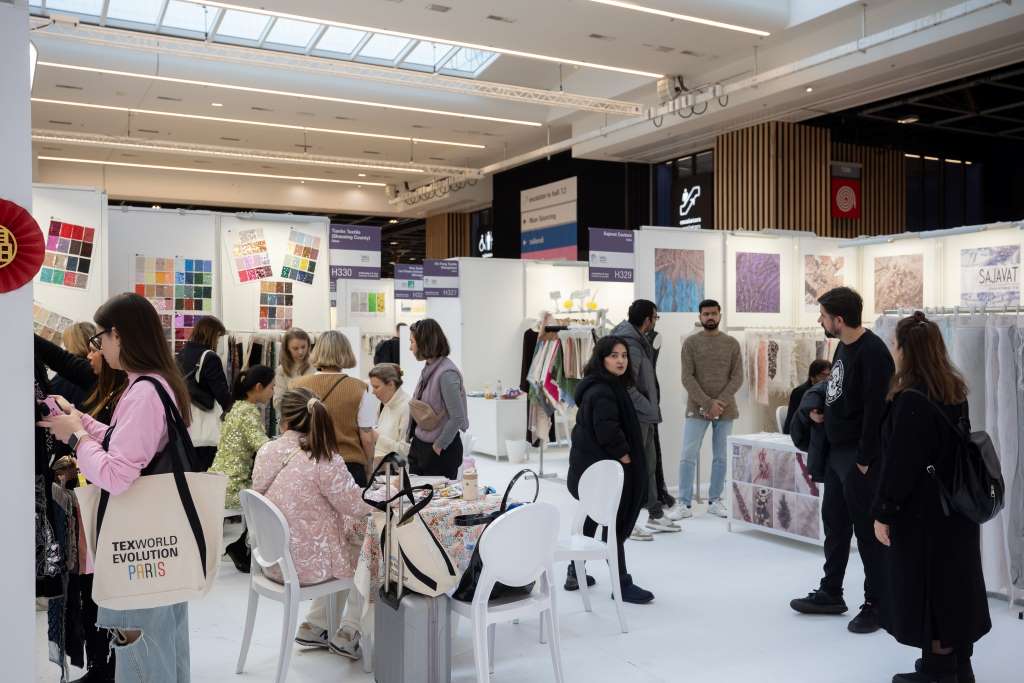FW
Tonello, a pioneering force in garment finishing, is poised to dominate the stage once again at the upcoming Kingpins Show in Amsterdam. With a focus on innovative technologies and esteemed collaborations, Tonello promises to unveil new solutions and perspectives that shape the present and future of garment finishing.
Indigo Garment Dyeing Reinvented: Leading the charge is DyeMate, Tonello's latest patented innovation, poised to revolutionize traditional indigo garment dyeing. Notably versatile, it accommodates VAT and sulfur dyes, presenting an array of new indigo shades at Kingpins, boasting surprising hues and nuances.
Pushing Boundaries with Obleach: Tonello debuts "The Dark Side of Obleach," transcending the limits of their patented process to deliver authentic effects on black denim and fabrics, showcasing unprecedented results.
Ripper Mode: Redefining Breakages: Tonello introduces Ripper Mode, a breakthrough technology ensuring flawless breakages while preserving fabric integrity, promising a guaranteed "wow" factor.
Collaborative Showcases: Tonello shines in various projects and collaborations, notably:
• Deepindigo: A collaboration with Officina39 and Telariazul, presenting a collection that elevates indigo dyeing, craftsmanship, and artistry to new heights, resulting in garments that are true masterpieces.
• MSP Collection: Developed in partnership with Denim House and Kingpins Show, designed by Piero Turk and Serena Conti, featuring responsible finishing technologies processed in Tonello's R&D center.
• One Denim: Exploring the limitless potential of a single fabric, showcasing Kaltex fabrics designed by Piero Turk and finished by Tonello, highlighting the latest finishing technologies.
Tonello's presence at Kingpins is set to be a highlight of the event, promising an unparalleled showcase of innovation and collaboration.
Specialising in luxury menswear, Ermenegildo Zegna Group posted 8.1 per cent sales growth to €463.2 million during the Q1 FY24. These results were driven primarily by strong performances in the United States and on its direct sales channel, while like most of its competitors, the Piedmont-based group, which is listed on the New York Stock Exchange, has been heavily penalised by the slowdown in China.
The group closed Q1 FY24 with a double-digit growth at constant exchange rates. It also recorded double-digit growth in the Americas through the successful implementation of its Zegna One Brand Strategy, says Gildo Zegna, CEO.
Between Jan-Mar’24, the group’s sales in America soared by 57.7 per cent to €114.2 million. In Europe, its sales increased by 4.3 per cent. However, in terms of organic growth, the group’s sales declined by 6.5 per cent compared to the same period in 2023, reflecting a negative performance from Thom Browne.
In the Asia-Pacific region excluding China, the group’s sales rose by 28.7 per cent, thanks to the strong performance of the Japanese market and the conversion of Thom Browne and Zegna's Korean monobrand shops from a wholesale to a retail format.
In the first quarter, the group's flagship brand Zegna, led by designer Alessandrp Sartori registered a 4 per cent rise in sales to €282.9 million. The brand continues to grow, albeit at a much slower pace.
For its part, Thom Browne’s sales declined by 29.6 per cent to €79.2 million during Q1 FY24, compared to the same period a year earlier. While the brand continues to record good results in Japan, it is particularly down in Greater China and Europe, where it has decided to reduce and rationalise its multi-brand distribution network to support direct sales. In the first quarter, Thom Browne's wholesale sales almost halved, from €69.7 million in the first quarter of 2023 to €34.5 million a year later, while they rose by 4.4 per cent in its own shops.
The fashion business of the American label Tom Ford posted sales of €65 million in the first three months of the year, reflecting a good performance, mainly in the United States.
With ending of the quiet luxury trend, demand for bold designs amongst affluent consumers is expected to rise, says Rachid Mohamed Rachid, Chairman, Valentino.
Valentino is embarking a ‘new chapter’ in its entrepreneurial journey as the brand hired Alessandro Michele as its creative director last month.
The move reflects the brand’s move away from the minimalist and monochrome styles of its precedessor Pierpaolo Piccioli whose collections had created a buzz with their elegance and single-colored focus. Valentino’s recruitment of Michele surprised the fashion world as the designer helped Gucci triple sales between 2014-19. Under his direction, Gucci sales almost tripled between 2015 and 2019.
According to Rachid, conditions for luxury goods remain tough. This year, the markets are expected to grow between 2 per cent to 4 per cent. However, in reality, the markets in Europe, the US continue to remain flat.
The National Council of Textile Organizations (NCTO) President and CEO, Kim Glas, applauds the appointment of Katherine White as Chief Textiles and Apparel Negotiator for the U.S. Trade Representative’s Office (USTR). This move, reinstating the role as a political appointee, marks a significant shift under U.S. Trade Representative Ambassador Katherine Tai.
White brings a wealth of experience to the position, having served as an International Trade Policy Advisor on the House Ways and Means Committee, as well as holding roles at the U.S. Department of Commerce and the White House. Her expertise in manufacturing policy and textile-related trade issues positions her as an invaluable asset to the industry.
Glas highlights White's appointment as pivotal in shaping policies impacting the textile sector, emphasizing her role in advancing manufacturing and worker-centered trade policies. The NCTO expresses gratitude towards Ambassador Tai for the redesignation of the office and acknowledges Laurie-Ann Agama for her service during the transition.
White's appointment signals a commitment to strengthening the domestic textile sector and fostering collaboration between industry stakeholders and policymakers. The industry eagerly anticipates working with her to navigate evolving trade landscapes and support the textile workforce.
With 1,700 exhibitors from 53 countries, Techtextil and Texprocess 2024 continue to highlight the future of textile production and processing by showcasing some groundbreaking technologies and revolutionary materials.
Celebrating its 20th edition, Techtextil is being held at a bigger scale than Texprocess that assert its dominance across all product categories. The two trade fairs showcase the latest materials, machinery, and processes along with some newly formed business partnerships.
Emphasising the significance of these events, Detlef Braun, Member - Executive Board, Messe Frankfurt GmbH, states, both Techtextil and Texprocess events serve as crucial indicators and catalysts for advancements across various industries. The event opened with a titled ‘From Textile Recycling to Garment Processing – the Role of AI’ that ignited few forward-thinking dialogues. Experts including Chloé Salmon Legagneur, Prof. Dr. Ingo Rollwagen, Elgar Straub, and Olaf Schmidt explored AI's potential in revolutionising textile production and processing.
Artificial intelligence presents a myriad of opportunities for the textile industry, from enhancing traditional manufacturing processes to fostering innovative product development. Prof. Dr. Ingo Rollwagen highlighted AI's role in fostering circular and regenerative textile solutions with longer life cycles, thus aligning with sustainability goals.
Textile recycling, a pressing concern, receives a boost from AI integration, promising scalable solutions for differentiating and separating textile materials efficiently. Collaboration between research and industry, exemplified by initiatives like CETIA's innovative recycling solutions, is crucial for driving progress.
As AI permeates the industry, Techtextil and Texprocess serve as essential platforms for information exchange and collaboration. The events provide a plethora of opportunities for companies to explore innovative solutions and forge partnerships essential for navigating industry transformation. From expert forums to guided tours, participants gain insights into digitalization, AI-driven business models, and real-time energy optimization.
Moreover, exhibitors showcase AI-integrated systems that analyse trends, identify faults, and optimise production processes intelligently, signaling a transformative shift in the industry. Elgar Straub, Managing Director, VDMA Textile Fair, Fabrics and Leather Technologies, notes, AI advancements come at a critical juncture for addressing challenges such as labor shortages, sustainability demands, and resource scarcity.
Techtextil and Texprocess 2024 offer a comprehensive spectrum of technical textiles, production technologies, and disruptive innovations, reflecting the industry's innovative prowess. The events foster networking opportunities and present a diverse program of expert lectures, special shows, and thematic exhibits. The Techtextil and Texprocess Innovation Awards recognise pioneering research and technologies shaping the industry's future, further solidifying these events as paramount for the textile industry's advancement.
Despite a pandemic-driven online shopping surge, physical stores remain dominant, as per a survey by Localcircles.
The survey shows, only 4 per cent consumers rely solely on online platforms while 47 per cent of respondents prefer to shop exclusively in stores for the ‘touch, feel, and try experience. About 40 per cent enjoy a mix of online and offline shopping.
Around 37 per cent respondents cited better deals and discounts as the biggest reason for online apparel shopping.
According to 29 per cent respondents, another major advantage is the ease of exchanging or returning clothes that don't fit or aren't what they expected. This eliminates the hassle of going back to the store. Also online stores often offer a larger variety of choices compared to individual physical stores, say 26 per cent of the responds. Some of the key drivers for online purchases include discounts and ease of return, according to the study.
Though the pandemic led to increased adoption of buying apparel online, consumers are once again opting for physical stores/markets to buy clothes.
Around 81 per cent of respondents cited the ability to touch, feel and try their chose garments before finalizing their purchases as the key reason for buying clothes online. Interestingly, 44 per cent of those who prefer stores also mentioned a wider selection, which might indicate a perception that online stores lack variety in some categories.
Other reasons include the ability to make a quick purchase and easy exchange and return of products
Around 35,000 consumers from 323 Indian districts responded to the survey. Out of these 61 per cent were men while 39 per cent respondents were women. Almost 43 per cent respondents belonged to the Tier I cities while 33 per cent hailed from Tier II cities and 24 per cent from Tier III, IV and rural districts.
Many consumers indicated that they made their first purchases of branded products in store while for repeat purchases they prefer online platforms as the fit and quality are already known. Their decision to make online platform their primary channel to buy clothes depends on whether these online platforms deliver faster and provide a better buying and return experience.
The Indian apparel market is expected to reach a staggering Rs 9.35 lakh crore (USD 105.5 billion) in 2024. Women's apparel holds the lion's share, at US$51.05 billion.
Consumers seek a balance of value, quality, fashion, and self-expression, influenced by social media trends.
India continues to dominate the global cotton market, reaffirming its position as the world's largest cotton producer in 2024. With an annual production of a staggering 5.9 million tons, the nation holds a commanding 25 per cent share of the global cotton output. Boasting vast cultivation across 120.69 lakh hectares, India's cotton industry thrives, propelled by states like Gujarat and Maharashtra, known for their adoption of sustainable farming practices.
The textile sector in India, the second-largest employer in the country, plays a pivotal role in driving exports, further solidifying India's stature as the world's second-largest exporter of textiles and clothing. Anticipating a surge in production to 7.2 million tonnes by 2030, India is poised for continued dominance in the global cotton market.
Following closely behind India, China secures its position as the second-largest cotton producer, contributing 5.73 million tons to the global output. With cotton cultivation covering 3.0 million hectares, China's well-established textile industry and extensive population bolster its influence in both domestic and international cotton markets. Notably, China cultivates a mix of Bt and non-Bt cotton varieties, predominantly in its northern and northwestern regions, with Xinjiang Uygur Autonomous Region leading the production charge.
The United States claims the title of the world's third-largest cotton producer, with an impressive production of 3.96 million tons. Renowned for its quality and long fibers, U.S. cotton, predominantly Upland and Pima varieties, commands approximately 35 per cent of global cotton exports. Spearheaded by states like Texas, California, and Mississippi, the U.S. cotton industry leverages advanced technology and genetic research to enhance yields and fiber quality, maintaining its prominence in the global market.
Top 10 Cotton Producers in 2024:
• India: 5.9M tons
• China: 5.73M tons
• United States: 3.96M tons
• Brazil: 2.68M tons
• Pakistan: 981K tons
• Uzbekistan: 940K tons
• Turkey: 833K tons
• Australia: 608K tons
• Argentina: 349K tons
• Mali: 340K tons
In a landscape shaped by these top producers, the global cotton industry continues to evolve, driven by innovation, sustainability, and market dynamics.
Trutzschler, in collaboration with Balkan Textile Machinery Inc.Co., unveiled the Truecycled solution at ITMA 2023, Milan, marking a significant stride in textile recycling. With increasing inquiries for recycling systems, Trutzschler emerges as a frontrunner in addressing the global textile waste crisis.
Trutzschler pioneers a comprehensive approach to textile waste management, offering a complete system from mechanical recycling to spinning preparation. By optimizing tearing and spinning processes, manufacturers gain a competitive edge and ensure premium quality output.
Georg Stegschuster, a textile recycling expert, emphasizes the importance of fine-tuning tearing and spinning processes to mitigate fiber shortening. Trutzschler’s technology, exemplified by the TC 30Ri card and IDF 3 draw frame, balances gentleness with effectiveness, crucial for handling short fibers and achieving superior product quality.
Trutzschler’s Truecycled solution heralds a new era in textile recycling, offering not just machinery but a strategic approach to sustainability. With innovative technologies and expert insights, Trutzschler empowers manufacturers to enhance the value of recycled materials without compromising quality. As the industry seeks solutions to the textile waste crisis, Trutzschler leads the charge towards a more sustainable future.
Textile exports from Pakistan increased by 3.56 per cent Y-o-Y to $1.36 billion in Mar’24 as against $1.31 billion in Mar’23, as per data from the State Bank of Pakistan (SBP).
On a M-o-M basis, Pakistan’s textile exports increased by 4.45 per cent in Mar’24 compared to exports worth $1.3 billion in Feb’24.
Cumulatively in 9MFY24, the textile exports decreased by 5.31 per cent Y-o-Y to $12.25 billion compared to $12.94 billion in 9MFY23.
In Mar’ 24, textile group products accounted for 54.04 per cent of Pakistan’s total exports. Some of the most exported categories in this group included Knitwear with exports rising by 5.97 per cent to $326.19 million, Readymade Garments with exports increasing by 1.07 per cent to $301.45 million, and Bed Wear with exports expanding by 7.47 per cent to $229.95 million.
On the other hand, the exports of leather manufacturers declined by 1.07 per cent Y-o-Y to $49.42 million in Mar ‘24.

China's luxury e-commerce market, once a golden goose for high-end brands, is facing a new challenge: skyrocketing return rates. Shoppers are exploiting loopholes in e-commerce platforms like Alibaba's Tmall to snag discounts and fleeting status symbols, only to return the items shortly after. For example, during last year's ‘Singles day’ shopping festival, high-end labels like Ralph Lauren and Burberry saw a sharp increase in sales on Alibaba's Tmall platform, only to have a whopping 75 per cent of that value vanish within days due to cancellations and returns. This trend, far exceeding the industry average of 20-30 per cent, is forcing a rethink for luxury brands in the world's second-largest economy.
The culprit: China's economic slowdown. The middle class, a key driver of luxury spending, is feeling the pinch and focusing on discounts or shying away from big-ticket purchases altogether. Tmall's aggressive promotions, while boosting initial sales figures, incentivize ‘gaming the system’ buying expensive items to qualify for discounts with the intention of returning them later.
High return rates threaten sales growth
Brunello Cucinelli's return rates on Tmall soared to 69 per cent in Q1 2024, up from 59 per cent a year prior, and LVMH owned Marc Jacobs saw a similar jump. This phenomenon isn't limited to a few brands. Richemont's Chloé, Ralph Lauren, and Mulberry are all experiencing similar spikes. So what could be the reason for this sudden change in consumer behaviour?
Gaming the system: Tmall's promotional campaigns with discounts incentivize high-value purchases. Some shoppers might be exploiting this by buying expensive items solely to qualify for discounts, with the intention of returning them later.
Shifting consumer behavior: China's economic slowdown is impacting the middle class, traditionally a strong contributor to luxury spending. This group is now more price-conscious and might be resorting to "renting" luxury items for short-term use through returns.
Promotional fatigue: Frequent discounting can erode brand image, making luxury less appealing to true high-end spenders.
‘Try-and-return’ culture: E-commerce giants like Tmall and JD.com's hassle-free return policies, including free return shipping and "no-reason" returns within seven days, encourage some to treat luxury purchases as rentals for special occasions.
The impact
Indeed, this has had a major impact on retail sales as its weakening growth. In fact, high return rates create a misleading picture of actual sales, making it difficult to gauge real consumer demand. LVMH, the world's biggest luxury conglomerate, reported a significant slowdown in fashion and leather goods sales in Q1 2024. Gucci's slumping China sales recently wiped billions off Kering's market value. However, shifting focus to high-net-worth individuals has some brands. Like Hermes and Dior, with their limited online presence and focus on cultivating loyal high-end customers, are weathering the storm better. Indeed, frequent participation in discount campaigns could damage brand exclusivity and appeal to high-paying customers.
Strategies to cope
Luxury brands are adapting numerous strategies to move ahead. To begin with, they are investing in concierge services and private sales. Building stronger, personalized relationships with wealthy customers. Also, they are focusing on immersive experiences, creating exclusive events and brand interactions to cultivate brand loyalty. Leveraging data analytics to understand customer behavior and identify suspicious purchase patterns can help tackle fraudulent returns.
Analysts predict a slowdown in China's luxury market growth in 2024, with HNWIs becoming the primary drivers. The future of luxury e-commerce hinges on brands' ability to adapt to this changing landscape and develop strategies that foster genuine customer loyalty.












